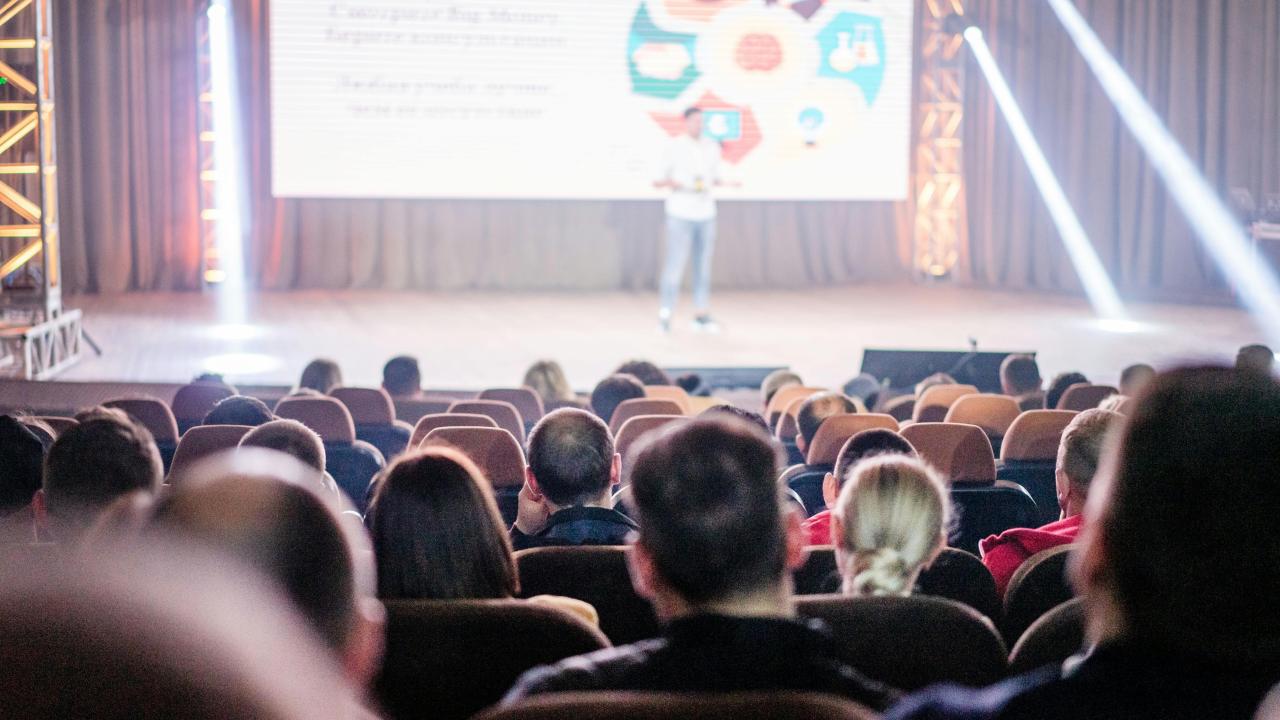
Which presentation format should I choose for my 2024 UC Tech Annual Conference proposal?
The format of your presentation can greatly influence its effectiveness, affecting the level of audience engagement and message memorability. To help you select the best format to enhance your presentation, we have listed key characteristics of each one.
As you review the list below, you should also consider:
- Desired outcome: What is your purpose? Is it to spread knowledge or collaborate with others to form new ideas?
- Engagement strategy: How do you want to engage attendees? Are the interactions hands-on? Are they collaborative or individual?
Presentation Formats
Active learning/experiential activities (variable length, maximum 30-45 minutes)
These guided, participatory activities afford facilitators and attendees the opportunity to share ideas with each other and learn by doing. They include:
- Multiple forms of active engagement to connect new concepts with prior knowledge (e.g. hands-on activities, writing, discussion, problem solving, question generation, reflection, etc.).
- Low bar for participation by inviting all attendees to engage in the activities and with each other.
- Opportunities for spontaneous discussion to bounce ideas off each other.
- Timely feedback and opportunity for reflection from presenter(s) and attendees.
- Relationship development and nurturing from learner to self, learner to others, and learner to the world at large.
Birds of a Feather Meetings (45 minutes)
These meetings allow attendees with common interests to gather and discuss issues. They include:
- Casual, informal atmosphere for attendees to come together.
- Flexibility and adaptability to short and long discussions about issues that may not fit within other presentation formats.
- Conversational engagement between presenter(s) and attendees to share diverse perspectives and ask questions.
- Networking opportunities to engage, collaborate, and build relationships with like-minded individuals.
Interactive Presentations (45 minutes)
These sessions are opportunities to share topics of interest through an innovative, thought-provoking format that fosters belonging. They include:
- Nonlinear format, allowing presenter(s) to jump around to content that attendees find interesting.
- Interactive content (e.g. videos, animations, polls, games), adding fun, novelty, and a personalized touch to the presentation.
- Real-time participation and interaction between presenter(s) and attendees throughout the entire presentation, adding spontaneity and increasing attention to the material.
Panel Discussions (45 minutes)
These sessions feature two to four dynamic presenters coming together to explore a shared topic. They include:
- Multiple perspectives by presenters, offering different approaches to a topic.
- Structured conversations led by a moderator for an organized, respectful, and productive exchange of ideas.
- Audience engagement, often at the end of the panel for attendees to seek clarification or deeper discussion.
Poster Sessions (20 minutes)
These sessions demonstrate the use of an emerging technology or innovative practice for teaching and learning. They include:
- Visibility for your research in its early stage of development.
- Short, insightful discussion and critique from peers to improve your work or discuss new ideas.
- Networking opportunities to engage, collaborate, and build relationships with other attendees who are interested in your research.
Standard Presentations (45 minutes)
These sessions are opportunities to present in-depth on a project. They include:
- Detailed presentation about a project to provide a comprehensive overview of your work.
- Structured, focused delivery through clear sections, key points, and a logical flow.
- Audience engagement at the end of the presentation through a Q&A.
